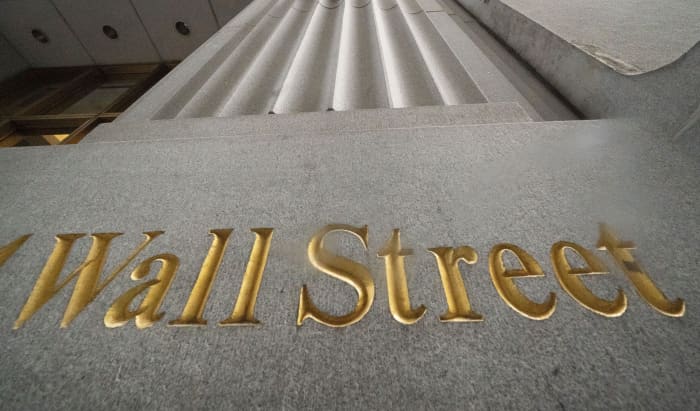Investors should brace for more volatility in stocks in the coming months, said James McCann, deputy chief economist at abrdn, after the Federal Reserve on Wednesday bumped up rates to a 5.25%-5.5% range, the highest in 22 years.
“We are pretty cautious on equities,” McCann told MarketWatch after the Fed raised rates by a quarter point, as expected, but indicated future rate hike could be possible in the coming months.
“We are mindful that our macro view is more pessimistic than some others in the market,” McCann said of abrdn, which oversees about $452.4 billion in assets. He also said their view is that a U.S. recession looks more likely to materialize in the next 12 months than not.
Stocks and other risk assets have been punching higher this year, even with the brief swoon this spring after a few regional banks collapsed, caught offsides by the rapid pace of rate increases since March 2022. But one of the most widely anticipated U.S. downturns in decades has yet to unfold.
Stocks were higher Thursday, a day after the Dow Jones Industrial Average
DJIA,
Hurry up and wait
“We’ve covered a lot of ground,” Fed Chair Jerome Powell said Wednesday, in an afternoon press briefing. He also said the inflation fight has a long way to go, while indicating future rate hikes will be determined on a meeting-to-meeting basis.
“It is certainly possible,” Powell said of another rate hike in September, but he also indicated a pause could be an option, depending on how confident central bankers are around inflation receding to the Fed’s 2% annual target.
A key inflation gauge, the consumer-price index, fell to a 3% annual rate in July, after peaking at 9.1% last year. The drop comes as the cost of oil, homes, food, cars and more have come off peak pandemic levels, and some rate-sensitive parts of the economy, like housing, have been fairly resilient.
Powell said getting harder-to-tame areas of inflation under control remains a key focus, amid a still robust labor market. He called the a 3.6% unemployment rate “a real blessing,” while also saying Fed officials aren’t seeking to put more people out of work with rate hikes, but that the historical record tends to point to a softening labor market during rate-hiking cycles.
Get paid to wait
Amar Reganti, fixed-income strategist at Hartford Funds, said he was struck by Powell’s emphasis on Wednesday about the Fed’s willingness to tolerate more unemployment to get inflation down.
Hartford Funds, which has about $127.2 billion in assets under management, still views the U.S. consumer as looking “robust,” even if default rates among some segments of the population and elsewhere in the economy have begun to tick up.
“We are still in very, very good shape relative to any benchmark time period,” Reganti said.
He also argued that, unlike stocks, if a recession comes to pass, fixed income looks poised to remain a substantial source of income for investors.
After eclipsing 5% earlier in March, the 2-year Treasury rate
TMUBMUSD02Y,
“Market participants are being paid to wait to see how the economic data pans out,” he said. “A mere few years ago, that was a very hard argument to make.”







